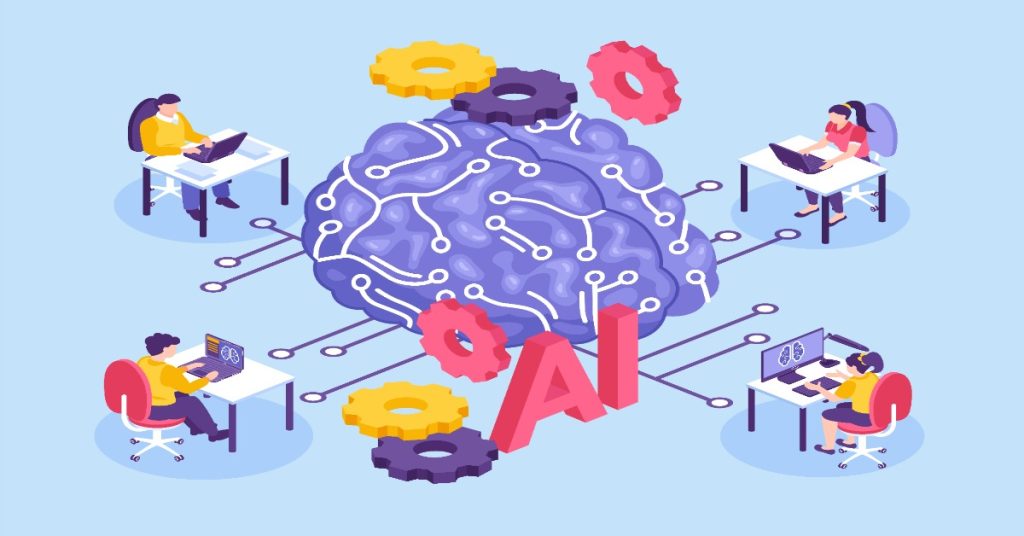Customer reviews shape buying decisions. They flood e-commerce sites, social media, and forums. Businesses drown in this feedback without tools to make sense of it.
Machine learning changes that. It sifts through thousands of reviews to spot patterns. Think positive trends in product features or recurring complaints about service.
This post walks through the full process. We start with raw data and end with a live system. Along the way, we’ll cover key steps in customer review analysis using machine learning.
You’ll see practical examples. No theory dumps, just clear paths to results. By the end, you’ll grasp how to turn reviews into business wins.
Table of Contents
Why Focus on Customer Review Analysis?
Reviews offer goldmines of insight. A single negative comment can tank sales. Positive ones build loyalty.
Manual reading works for small volumes. But scale hits, and humans miss nuances. Machine learning scales analysis without fatigue.
It detects sentiment at scale. Classifies reviews as positive, negative, or neutral. Even pulls out specific aspects like “battery life” in electronics feedback.
Businesses gain from this. Marketers spot hot features. Product teams fix pain points fast. Customer service prioritizes urgent issues.
One study found 93% of buyers check reviews before purchase. Ignoring them costs market share. Machine learning makes analysis routine, not reactive.

Step 1: Collecting Review Data
Data starts everything. Sources include Amazon, Yelp, Google Reviews, or your own site.
Use APIs for bulk pulls. Amazon’s Product Advertising API grabs star ratings and text. Scraping tools like BeautifulSoup work for custom sites, but check terms of service.
Aim for diversity. Mix short rants with detailed essays. Include timestamps to track trends over time.
Volume matters. Start with 10,000 reviews for decent training. Label a subset manually for supervised learning.
Tools like Google Cloud Natural Language help sample data. Or build scrapers in Python with Selenium for dynamic pages.
Once collected, stored in CSV or JSON. Columns for text, rating, date, and product ID keep it organized.
Step 2: Preprocessing: Cleaning the Mess
Raw reviews are messy. Typos, slang, emojis clutter text. Machine learning hates noise.
First, lowercase everything. “Great!” and “great!” mean the same.
Remove stop words. “The” and “and” add little value.
Handle contractions. “Don’t” becomes “do not” for consistency.
Tokenize into words or sentences. Libraries like NLTK split text cleanly.
Stemming or lemmatization reduces forms. “Running” to “run” normalizes.
For multilingual reviews, translate or use models like mBERT.
Negation handling is key. “Not bad” flips sentiment. Flag phrases like “not” near adjectives.
Punctuation and numbers? Strip most, but keep ratings as features.
This step cuts data size by 30-50%. Cleaner input means sharper models.

Step 3: Feature Engineering: Turning Text into Numbers
Machine learning needs numbers, not words. Vectorization bridges the gap.
Bag-of-Words counts word occurrences. Simple, but ignores order.
TF-IDF weights rare terms higher. “Battery” in phone reviews scores big.
Word embeddings capture meaning. Word2Vec groups “fast” near “quick”.
For deeper insight, use BERT. It understands context, like sarcasm in “Thanks for nothing.”
N-grams add phrases. “Customer service” as one unit catches complaints.
Combine with metadata. Star ratings as numeric features boost accuracy.
In customer review analysis, features like review length signal detail level. Short ones often vent frustration.
Test combinations. Cross-validation shows what sticks.
Step 4: Choosing ML Models for Sentiment Classification
What machine learning techniques are used for customer review analysis? Logistic Regression starts simple. It predicts binary sentiment fast.
Naive Bayes shines on text. Assumes word independence, yet handles sparsity well.
Support Vector Machines draw hyperplanes. Great for high-dimensional review vectors.
Deep learning steps up. LSTMs process sequences, catching flow in long reviews.
Transformers like BERT pre-train on vast text. Fine-tune for your domain, hit 90%+ accuracy.
Hybrid approaches mix them. Ensemble voting reduces errors.
For customer review analysis, start basic. Scale to advance as data grows.
Pick based on size. Small datasets favor traditional; big ones love neural nets.

Step 5: Natural Language Processing in Review Sentiment Detection
How does natural language processing contribute to review sentiment detection? NLP parses human language for machines.
Tokenization breaks text into units. Essential for feeding models.
Part-of-Speech tagging IDs nouns, verbs. Helps extract aspects like “screen quality.”
Dependency parsing maps relations. “Broke after a week” links failure to time.
Named Entity Recognition spots brands or products. Filters noise in reviews.
In sentiment detection, NLP flags polarity. VADER scores informal text with emojis.
Coreference resolution ties “it” to prior nouns. Avoids confusion in chains.
Without NLP, models guess blindly. With it, they read like humans, minus bias.
Tools like spaCy speed this. Python pipelines chain steps efficiently.
Step 6: Training the Model: From Data Split to Fitting
Split data 80/20 for train/test. Stratify by sentiment to balance classes.
Handle imbalance. Oversample minorities or use SMOTE for synthetic examples.
Cross-validation tunes hyperparameters. Grid search tests learning rates.
Fit the model. For BERT, use the Hugging Face Transformers library.
Monitor loss. Early stopping prevents overfitting.
Augment data. Paraphrase reviews with back-translation for variety.
In practice, train on GPU. Hours become minutes.
Log metrics with TensorBoard. Track progress visually.
Once stable, save the model. Pickle for scikit-learn, or ONNX for portability.

Step 7: Evaluation: Measuring What Matters
What metrics evaluate the performance of review analysis models? Accuracy is basic. But imbalanced data fools it.
Precision and recall balance false positives. Recall catches all negatives.
F1-score harmonics them. Ideal for uneven classes.
Confusion matrix visualizes errors. See where positives mislabel as neutral.
ROC-AUC plots trade-offs. A higher curve means better discrimination.
For multi-class, macro-average aggregates scores.
Domain-specific: Aspect-level F1 for targeted sentiment.
Test on holdout set. Real-world validation uses A/B on live reviews.
Iterate if scores lag. Tweak features or swap models.
Aim for 85% F1 in production. Higher is a bonus, not a must.
Aspect-Based Sentiment: Beyond Overall Scores
Overall sentiment misses details. Aspect-based digs deeper.
Identify aspects first. Topic modeling with LDA clusters words into themes.
Then sentiment per aspect. “Camera great, battery poor.”
Models like ABSA-BERT handle both in one pass.
This granularity shines in reports. “80% love design, 40% hate price.”
Customers get precise feedback loops. Businesses target fixes.
In e-commerce, it powers recommendation tweaks.
Implementation: Train separate classifiers or use joint models.
Output as JSON: {“aspect”: “delivery”, “sentiment”: “negative”, “confidence”: 0.92}

Handling Challenges: Noisy Data and Sarcasm
How to handle noisy data in customer reviews? Noise includes spam, off-topic rants.
Filter with rules. Short reviews under 10 words? Flag as low quality.
Outlier detection via isolation forests removes anomalies.
For sarcasm, context models help. “Fantastic fire hazard” flips with BERT.
Multilingual noise? Language detection drops mismatches.
Domain adaptation fine-tunes on your vertical. General models falter on jargon.
Version control data pipelines. Track changes for reproducibility.
These steps cut error by 20%. Clean data, clear signals.
Deployment: From Notebook to Production
What are the steps in building an ML model for review analysis? We’ve covered most: collect, clean, feature, train, evaluate.
Now deploy. Containerize with Docker. Packages model and deps.
Serve via Flask or FastAPI. REST endpoints take text, return sentiment.
Cloud options: AWS SageMaker endpoints scale auto.
For real-time, Kafka streams reviews in. Process batches nightly for reports.
Monitor drift. Review styles change; retrain quarterly.
A/B test old vs. new. Measure impact on response times.
Security: Sanitize inputs against injections.
Costs: Optimize inference. Quantize models for speed.
Live systems handle 1,000 reviews/minute. Feedback loops close fast.

Real-World Case Studies
A retail giant used this pipeline. Analyzed 1M Amazon reviews.
The BERT model hit 88% F1. Spotted “fit issues” in clothing, led to size chart redesign.
Sales up 12% post-fix.
Another, a hotel chain. NLP extracted “room cleanliness” sentiments from TripAdvisor.
Negative spikes triggered audits. Guest scores rose 15 points.
Food delivery app. Aspect analysis on “delivery time” complaints.
Routed alerts to drivers. Wait times dropped 20%.
These show ROI. Months to build, years of gains.
Tools and Libraries: Your Tech Stack
Python rules here. Scikit-learn for basics.
NLTK or spaCy for NLP.
Hugging Face for transformers.
Pandas wrangles data. Matplotlib plots insights.
For deployment, Docker and Kubernetes orchestrate.
Open-source keeps costs low. Community plugins abound.
Start small. Jupyter notebooks prototype fast.
Scale with MLflow for experiment tracking.

Ethical Considerations in Review Analysis
Bias lurks in data. Reviews skew to vocal minorities.
Mitigate with diverse sampling. Audit models for fairness.
Privacy: Anonymize before storage. GDPR compliance checks.
Transparency: Explain predictions with LIME. Users trust black boxes less.
Over-reliance risks. ML aids, humans decide.
Balance scales analysis with empathy.
Future Directions: What’s Next?
Multimodal analysis incoming. Pair text with images in reviews.
Zero-shot learning skips labeling. Prompt LLMs for new products.
Federated learning trains across sites without sharing data.
Edge deployment on devices. Instant sentiment at checkout.
Quantum boosts? Early days, but speed gains loom.
Stay agile. Update models as language evolves.
Read More
The Ultimate Guide to Survey Design for 2025
Eliminate Common Survey Errors: A Simple Guide
Why Survey Data Security Should Be Your Top Priority?
Wrapping Up: Actionable Insights Await
Customer review analysis via machine learning transforms feedback into fuel. From scraping data to serving predictions, each step builds value.
Implement piecemeal. Start with sentiment, add aspects later. Track wins. Reduced churn, higher NPS.
Your turn. Grab a dataset, code a model. See patterns emerge. Questions? Drop in comments. Let’s discuss your setup.

